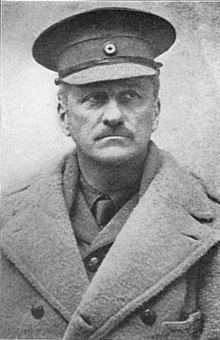Spouse Martha Cowdin (m. 1883) | Name Robert Bacon Political party Republican | |
 | ||
Born July 5, 1860Jamaica Plain, Massachusetts, U.S. ( 1860-07-05 ) Children Robert L. Bacon, Gaspar G. Bacon Books Britain's Economic Problem: Too Few Producers Similar People Elihu Root, James Brown Scott, David Bacon, Hillary Rodham Clinton, Anne Wexler | ||
Robert Bacon | Wikipedia audio article
Robert Bacon (July 5, 1860 – May 29, 1919) was an American statesman and diplomat. He served as United States Secretary of State from January to March 1909.
Contents
Early life and family
Born in Jamaica Plain, Massachusetts, to William Benjamin Bacon and Emily Crosby Low, he was a graduate of Harvard University (Class of 1880), where he was a member of the A.D. Club and Delta Kappa Epsilon. He was married on October 10, 1883 to Martha Waldron Cowdin. They had four children: Robert Low Bacon, Gaspar Griswold Bacon, Elliot Cowdin Bacon, and Martha Beatrix Bacon who married George Whitney (1885-1963). Their son Robert was a United States Congressman and Gaspar was the President of the Massachusetts Senate from 1929–32 and Lieutenant Governor of Massachusetts from 1933 to 1935.
Career
He worked in the business world, including partnership with J.P. Morgan & Co. for many years starting in 1894. He acted as J.P. Morgan's chief lieutenant and participated in the formation of the U.S. Steel Corporation and the Northern Securities Company. The pressure of the job shot his nerves, and he left the company in 1903.
He was named Assistant Secretary of State in 1905, a position which held until 1909; he was acting Secretary while Elihu Root was in South America in 1906. He became full Secretary only for the last 38 days of the term of President Theodore Roosevelt (with whom he was friends at Harvard), from January 27 to March 5, 1909. Bacon obtained the advice and consent of the Senate for the Panama Canal treaties with Colombia and Panama. He served as United States Ambassador to France from 1909 until 1912. He was supposed to return home on the Titanic with his wife and daughter, but his voyage was delayed by the late arrival of the new ambassador. Upon his safe arrival back in the U.S. he became a Fellow of Harvard in 1912.
In August 1914, he went to France to help with the work of the American Field Service - which provide ambulances and drivers to support French and British forces. He was also attached to the British Army Medical Corps and assisted with the establishment of a typhoid hospital near Ypres. His book For Better Relations with Our Latin American Neighbors was published in 1915.
He was then commissioned a major in the U.S. Army in May 1917 before sailing to France as a member of General Pershing's staff. He was promoted to lieutenant colonel in 1918 and served as Chief of the American Military Mission at British General Headquarters. He returned to the United States in April 1919.
Bacon died on May 29, 1919 from blood poisoning after undergoing surgery on his mastoiditis.
Memorial
A sculpture entitled The Sacrifice was made by Malvina Hoffman as a memorial to the late Ambassador of France, Robert Bacon, and alumnists of Harvard University who lost their lives during the World War I. In it, the head of a 13th-century crusader lay on the lap of a draped woman. The sculpture was dedicated in 1923 at the Cathedral of Saint John the Divine in New York. After the War Memorial Chapel at Harvard University was completed in 1932, it was installed there.
